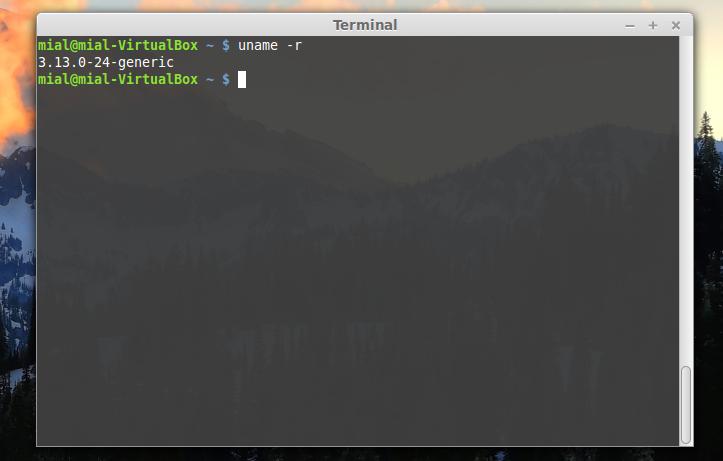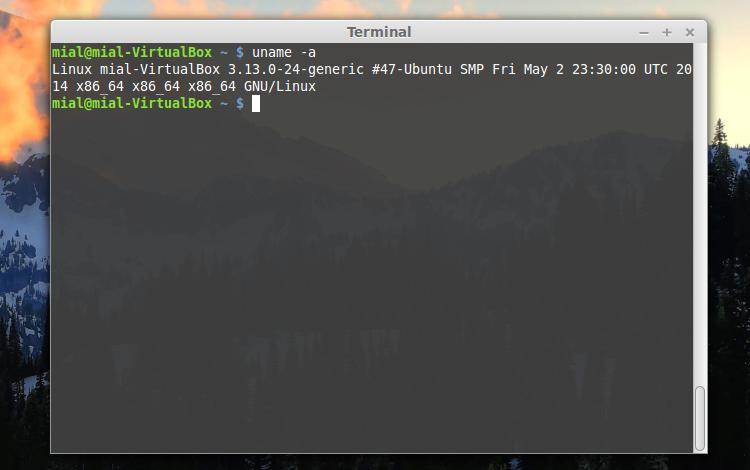GNU/Linux has already found many fans and is becoming increasingly popular today. The number of distributions is growing rapidly, so you need to be able to understand which one is the most optimal. And this is fair, because Linux is a free graphical interface that rightfully enjoys the greatest success around the world. Often the user needs to know the version of Linux, for example, to install any programs compiled for certain versions. Their numbers are calculated in the form "Year.Month" (or "YY.MM"). Thus, these numbers indicate the release date of the distribution. Another important point is that each release must have its own codename, for example "Karmic" or "Lucid Lynx".
What actually is a kernel, what are the differences between these kernels, why do they need to be constantly developed and counted? The core is the central link of the system; it is very large in size, but it also contains an orderly and clear hierarchy of various levels. Its main components are: system calls (SCI), process management (PM), memory management (MM), and virtual system files (VFS), network stack and various device drivers. Finding out the version of Linux means also finding information about the kernel. For ordinary users who are not very knowledgeable in the field of working with software, you have to deal with it extremely rarely, because not everyone will be able to cover all the important and subtle aspects of this program level. Versions differ in their interaction with hardware, drivers and operating speed. And everything that the user uses is only the surface shell and GNU applications (this prefix must be present before the Linux inscription in the system version).

Find out the version Linux user Maybe different ways. For example, there is a utility "lsb_release" that can be used in conjunction with the -a switch. You must first log in and then type the command. It may not be possible to install it, then the program will have to be downloaded from the repository. After entering, the screen will show the name of the distribution and its version.
You can view the Linux version by typing "cat/etc/issue". After this, the following data should be displayed on the monitor: Debian GNU/Linux 6.0 \n \l or Ubuntu 12.04.2 LTS \n \l.
The version of the kernel itself is found out using the specified function "uname -r", but if instead of the last prefix you write -a, then all the information on this command will be displayed.

Also, if you cannot log into the system, you can find out the Linux version by rebooting system unit and in the download menu find all the most necessary information. This method is used to identify which distribution is being used.
Information about the Linux system is also stored in the /etc/lsb-release file. Therefore, to open it, enter the following command in the terminal: cat /etc/lsb-release. Also in the system GUI Linux version can be found in the user manual.
So, various systems of the Linux family, being quite complex, provide fairly simple and accessible methods for determining the distribution version and kernel number. There are several viewing options, both using a terminal and without it.
If you are using Linux like operating system on your computer, then you are well aware of what kind of Linux is running there, but what if you need to connect to someone else's server and do the same job? It's really helpful to know exactly what you're dealing with, and luckily it's very simple.
Like everything else in Linux, there are many ways to do this, so we'll show you a few different techniques and let you decide which is best for you.
How to see the Linux version name
The simplest and easiest way to see the title Linux distribution and the version number also works on almost any Linux. Just open a terminal and type the following there:
Cat /etc/issue
You will see something like the screenshot at the top of this article, which looks something like this:
Linux Mint 17 Qiana
If you need more information you can use various commands, while they may not work on every distribution, they definitely work on the most popular ones. Just as before, open a terminal and type the following:
Cat /etc/*release
You'll get something like the following screenshot, and you can see that not only is there release information, but we've also been given a codename and even a URL. What actually happened here is that on Mint there is a file /etc/os-release, but on other versions there might be something like /etc/redhat-release or a completely different name. By using * in the command, we simply output the contents of any of them to the console.
The simplest method, of course, is the cat /etc/issue command, but the one we used is even better.
How to see the kernel version
The distribution version and the Linux kernel version are two completely different things. You can easily see the version number by opening a terminal and typing the following:
Uname -r
The output will be something like the following, where we can see that the kernel version is 3.13.0.

How to determine if a 64-bit kernel is being used or not
Sometimes the previous command can already tell whether a 64-bit kernel is used, this can be determined by the x86_64 text, but the easiest way to do this is a command from the terminal, which is exactly the same command as the previous one, but with -a(this is called a key), which means "everything", instead of a key -r, which means "kernel release".
Uname -a
From this screenshot you can tell that x86_64 is running Linux version, which means 64-bit. If you were running 32-bit Linux, which you shouldn't do on the server, it would display "i386" or "i686" instead.

Quibblers will probably notice that you can use the key -i to show whether 32-bit or 64-bit is being used (useful in scripts), but it's better to just use -a to display everything at once.




